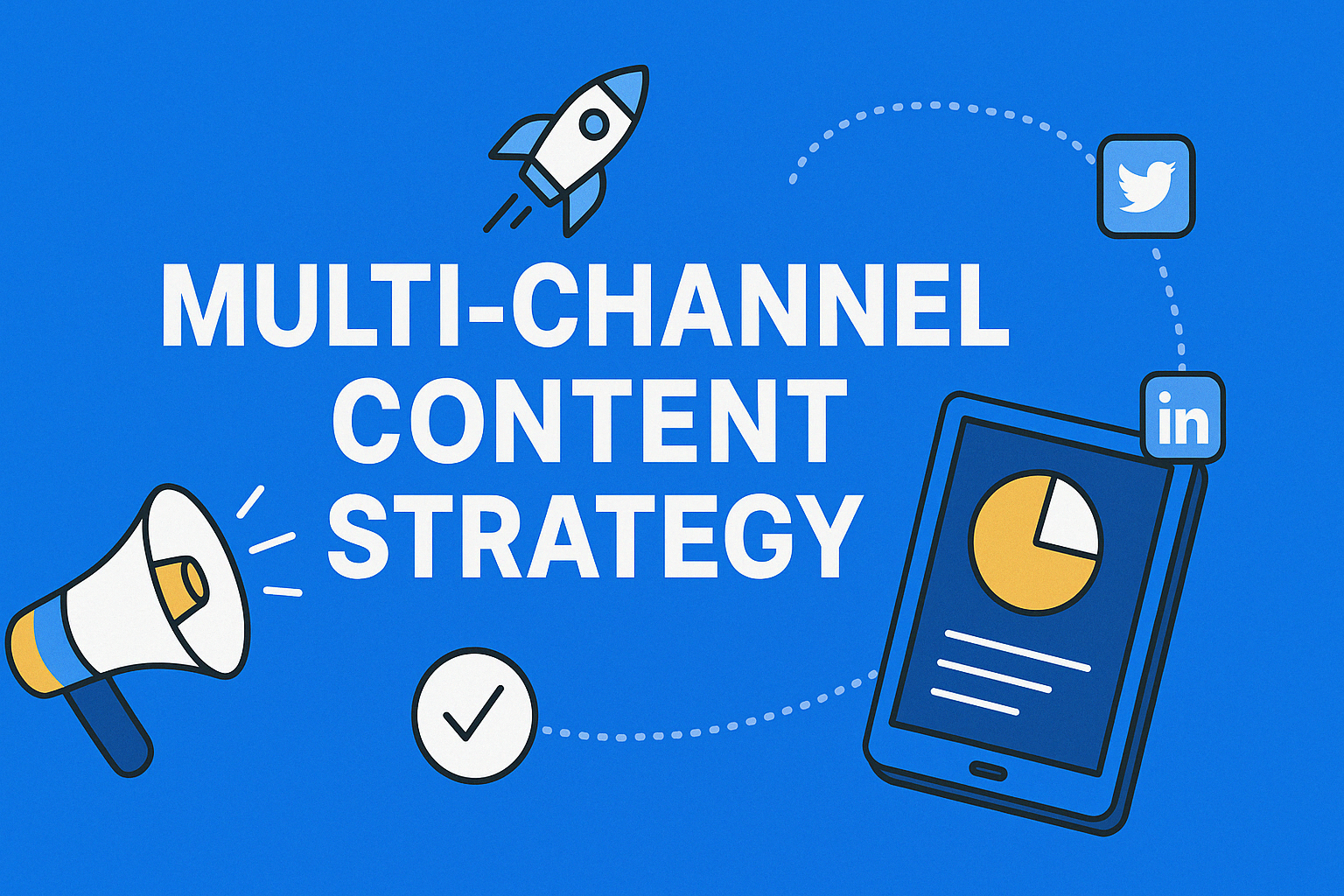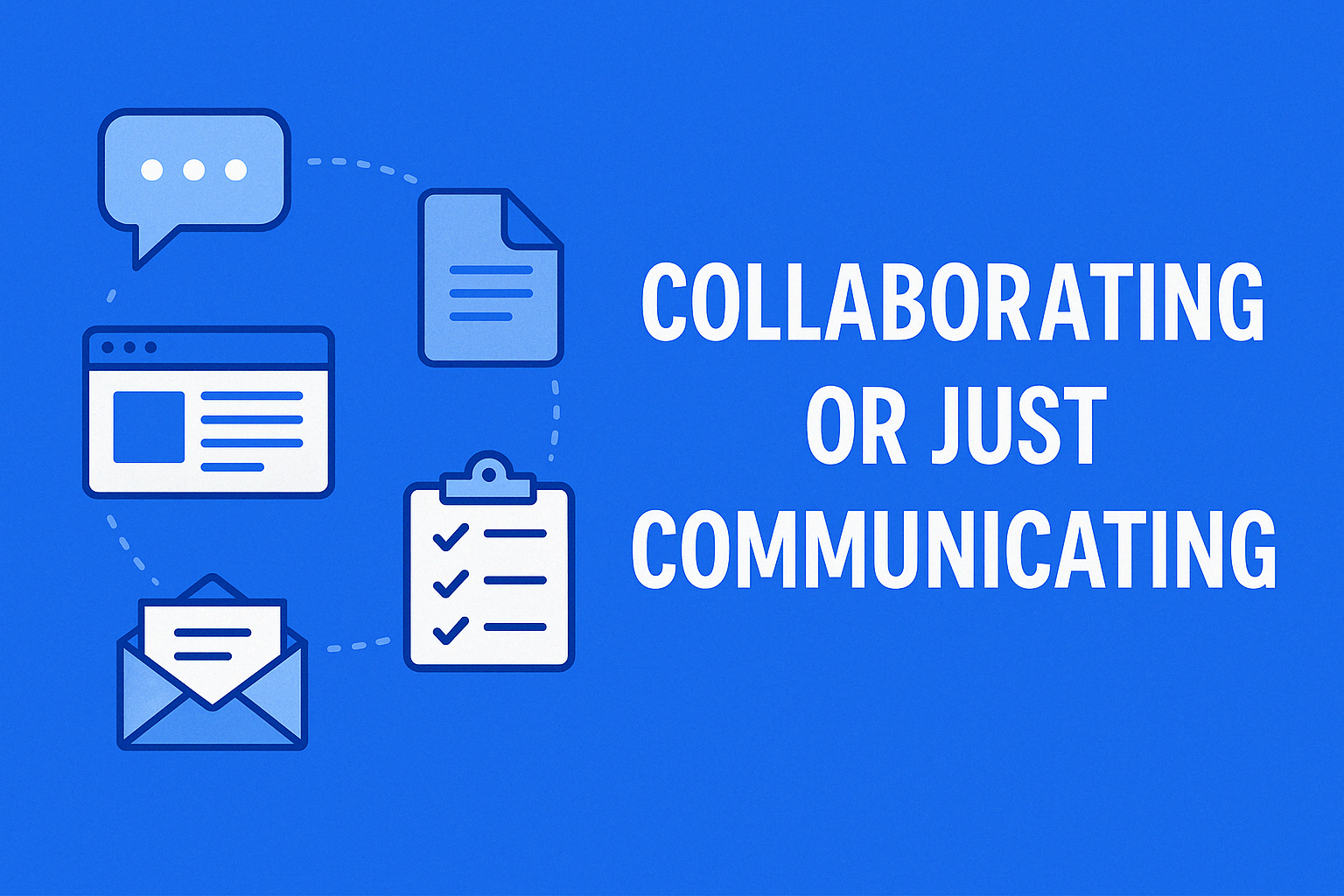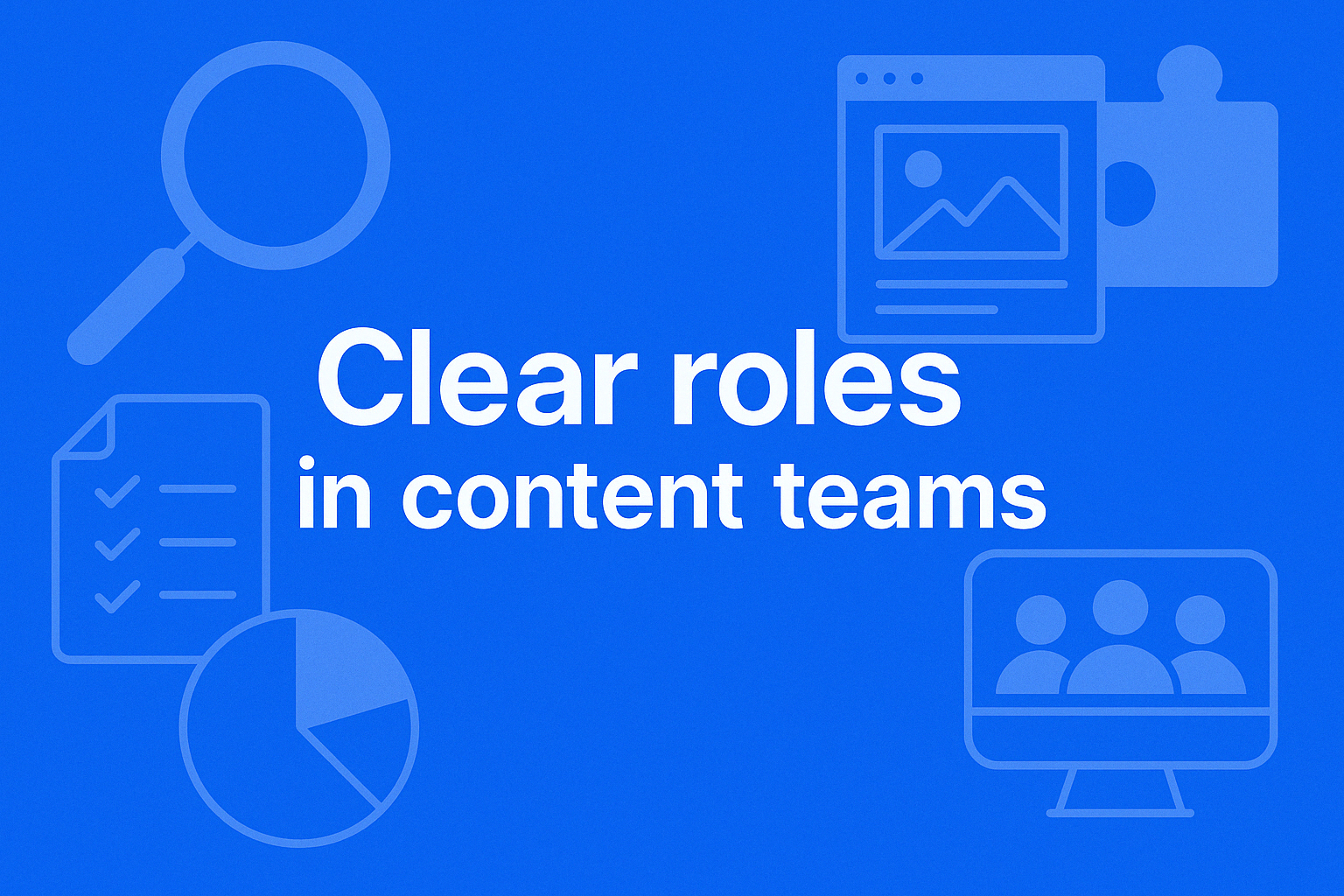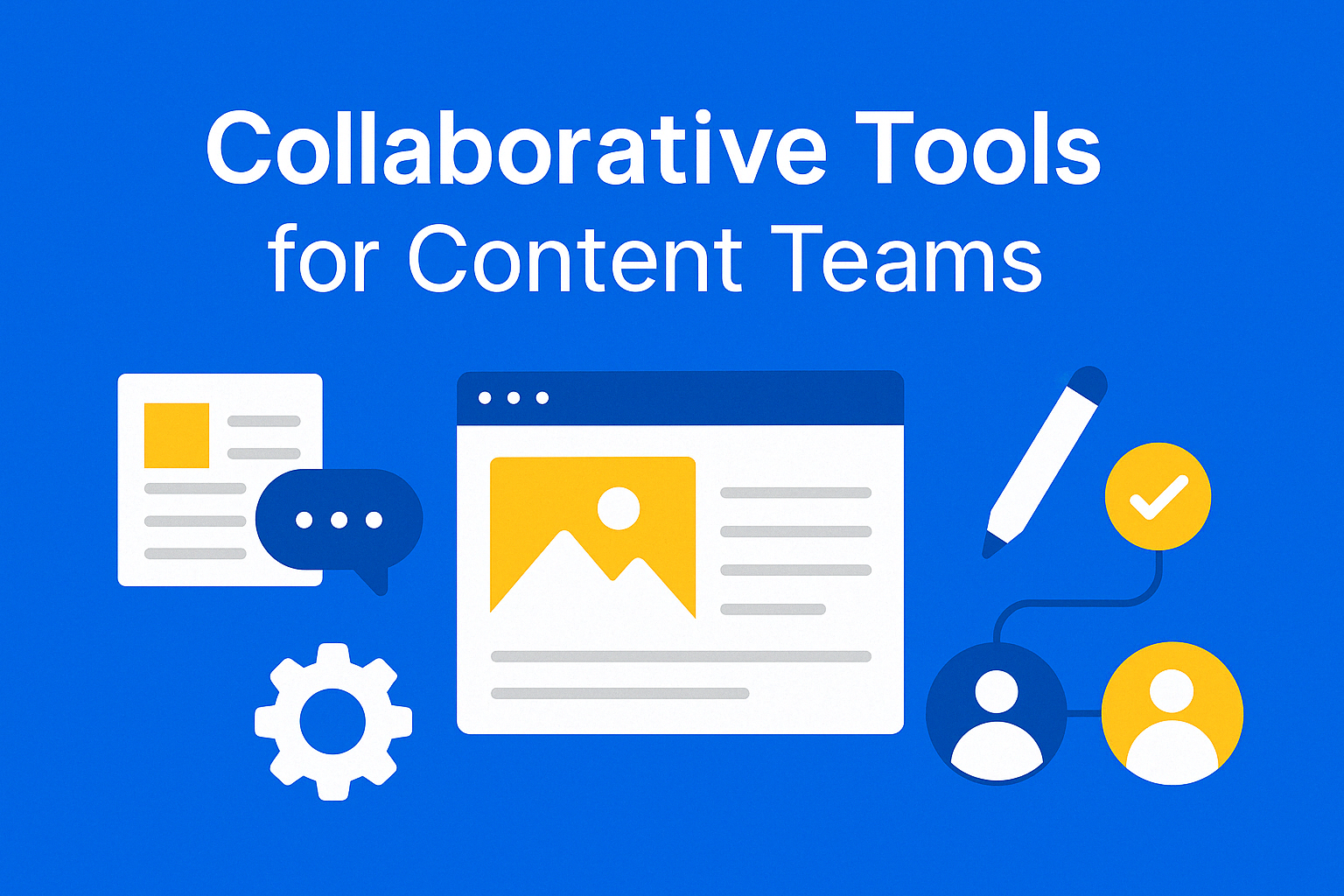Why Content Personalization Is Essential and How to Implement It Easily
Content personalization boosts engagement, loyalty, and conversions. Discover why it's essential in modern marketing and how to implement it easily using the right tools and strategies—without overcomplicating the process.

📚 Table of Contents
- Why Modern Marketing Needs Content Personalization
- Content Personalization's Power
- Typical Obstacles to Application of Personalism
- Basic Information Need for Appropriate Personalization
- Simple Methodologies for Customizing Content Without Complicating It
- Content Personalizing Automation for Effectiveness
- Evaluating Your Personalization Strategy's Performance
- What will make it work is making information more useful for everyone.
Why Modern Marketing Needs Content Personalization
Content from all directions—emails, social media postings, advertising, blog entries, and more—is inundating consumers nowadays.
Only the most relevant and customized content stands out among the abundance of material vying for attention.
People interact more with material that directly speaks to them—whether it's:
- an email customized to a user's interests
- or a product recommendation based on prior purchases
Companies who neglect to customize their communications run the danger of:
- losing audience interest
- reducing involvement
- and finally missing out on conversions
The days when companies could post wide, general content and hope for fantastic outcomes are gone—one-size-fits-all content is not the answer.
- Usually aimed for everyone, a blog article finds no one particularly relevant.
- Audiences are more inclined to scroll past, ignore, or completely avoid anything they feel is irrelevant to them.
- In today’s competitive environment, this might result in:
- lower engagement rates
- more bounce rates
- and fewer conversions
Example: Email Marketing
A generic email blast with the identical message for every subscriber is far less successful than a targeted email including tailored product suggestions based on previous purchases.
- Personalized emails reportedly have six times greater transaction rates than non-personalized ones.
And the same applies to:
- Website content
- Social media postings
- Even video marketing
👉 Personalization results in closer relationships with viewers and more robust brand loyalty.
Why Companies Have to Give Personalization Top Priority
Content personalizing is becoming a need rather than only a "nice-to-have" ability. Companies that customize their material depending on user choices, behavior, and demographics find greater conversion rates, more client retention, and stronger engagement. When done properly, tailored content supports businesses:
- People are more inclined to interact with material that seems pertinent to their requirements, therefore enhancing their user experience.
- Personalized CTAs, or call-to- actions, convert 202% more than generic ones.
- Remembering consumer preferences helps a brand to strengthen loyalty and trust.
Consider, for instance, how Netflix or Spotify suggest materials depending on viewing or listening experience. These businesses have perfected personalizing, which keeps people interested for more extended lengths of time. Starting with the correct tools, clever personalizing techniques will help even smaller companies to attain comparable success.
How EasyContent Simplifies Content Personalization
Maintaining structured and effective processes is one of the toughest obstacles companies have with content personalizing. Teams running several content versions for several audience groups may easily get overwhelmed. This is where sites like EasyContent find application.
EasyContent enables content teams to simplify their processes, control approvals, and guarantee that the correct tailored information finds the correct audience at the correct moment. Teams can consolidate their efforts and grow personalizing without anarchy by using EasyContent instead of handling several spreadsheets, emails, and unconnected technologies.
🔑 Key Takeaways
- Personalization is essential for better engagement and conversions.
- Generic content often fails to capture audience attention.
- Use data to tailor experiences—demographics, behavior, preferences.
- Automation tools like EasyContent help scale personalization efficiently.
- Track performance: engagement, bounce rate, conversions, and refine.
Content Personalization's Power
Imagine entering a store where the salesman remembers your name, already knows your tastes, suggests items depending on prior purchases. Would that be fantastic? Content customization in the digital sphere operates in this way—by making people feel appreciated, understood, and involved. Personalizing is a game-changer in current marketing, not only a fad; it helps companies create closer relationships and increase client retention.
Why Personalization Makes Sense?
People desire not to be another name on a marketing list. Their expectations are for material closely related to their interests, needs, and way of life. Research indicates that 80% of consumers are more inclined to buy from a business providing tailored experiences. Personalization helps consumers to feel noticed, therefore fostering long-term loyalty and brand confidence.
Personalizing helps to determine how successful marketing is:
- Personalized emails show six times more transaction rates and 26% higher open rates than generic ones.
- Reversing rates of turnover, clients who get pertinent advice are more likely to return.
- Stronger brand loyalty results from customers staying around longer and interacting more when they believe a brand "gets them."
Consider Spotify, for instance. The "Discover Weekly" playlist on the site compiles customized music suggestions based on listening behavior, therefore providing an experience that seems especially fit for every user. This basic function keeps people interested and lessens their possibility of turning to a rival company.
Companies Making Successful Use of Personalization
Great businesses have perfected personalizing to produce amazing outcomes. These are some actual case studies:
- Using watching data, Netflix suggests TV episodes and movies that fit consumers' tastes to keep them hooked.
- Amazon: Driven by prior searches and purchases, it suggests goods to increase conversions.
- Starbucks provides drink recommendations based on consumer purchase behavior as well as individual rewards.
Personalizing, meanwhile, is not only for billion-dollar businesses. Using the correct technologies, clever personalizing techniques may be applied by even small companies and content teams.
How EasyContent facilitates team scaling of personalization?
Managing several content variants effectively is one difficulty with personalizing. Here is where sites like EasyContent find application. Teams with EasyContent can:
- Group materials according to audience personas.
- Automate approvals and processes to expedite creation of tailored materials.
- Track performance to identify which tailored approaches yield greatest results.
EasyContent guarantees tailored content reaches the correct people without needless delays, therefore streamlining the process instead of hand developing separate content versions for different audiences.
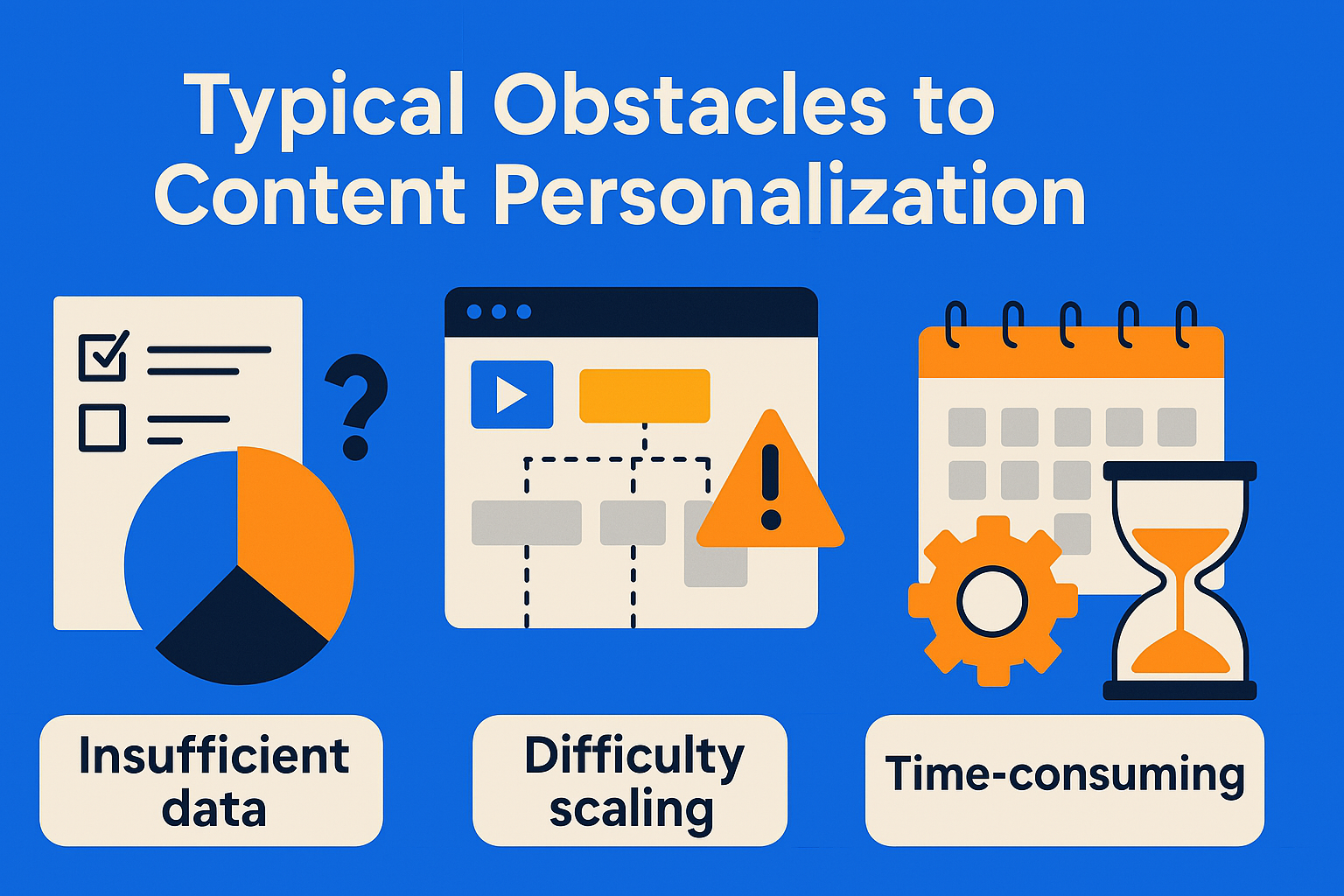
Typical Obstacles to Application of Personalism
Customized content is what viewers expect; it is not a luxury. Although companies see the need of personalizing, really putting it into effect might seem daunting. Many teams find it difficult to get the appropriate data, scale personalizing effectively, or stay away from complicating their content development process. Let us dissect the toughest obstacles and discuss how to go beyond them.
1. Insufficient client data or challenging insight collecting process
Personalizing content requires knowledge about your audience. The difficulty here is Many companies either lack sufficient client data or unsure of how best to make use of it. Developing custom content becomes a guessing game without thorough understanding of consumer tastes, behaviors, and demographics.
How should I solve it?
- Track consumer activity using analytics tools—Google Analytics, HubSpot, or CRM data.
- Via email campaigns and social media, run polls or gather comments.
- Sort your readers according on content preferences, buying patterns, or degree of involvement.
Consider a fitness company wanting to customize their email correspondence. Based on their interactions, they may classify members into weight reduction, muscle building, or overall wellbeing rather than forwarding the identical material to every one of them. This guarantees that consumers find materials truly appealing.
2. Difficulties Scaling Individualism Over Several Platforms
Customizing an email is one thing; but, what about blogs, landing sites, social media, and advertising? Many teams find it difficult to scale personalizing across several platforms, which results in uneven message or more labor.
How could one correct it?
- Manage and distribute individualized content effortlessly with a centralized content platform like EasyContent.
- Create content templates that let you quickly personalize without sacrificing consistent messaging.
- Using AI-driven technologies that change material depending on user choices, automatically offer tailored content.
For instance, a SaaS company providing several products to companies and independent contractors may automatically vary materials depending on audience type. While a freelancer finds price options catered to individual users, a B2B visitor to their website might view case studies.
3. Anxiety over Creating Content Too Time-Consuming or Complex
Many teams are reluctant to apply personalizing as they believe it would increase their responsibility twice. The worry is that, rather of producing one blog article, they will have to develop five separate versions for various audiences—which sounds taxing.
How can it be corrected?
- Start small by customizing just important touchpoints as emails, landing sites, or call-to-action buttons.
- Make use of readily repurposable modular content components for several audiences.
- Let automation handle the demanding tasks. EasyContent enables teams to simplify content production, approvals, and publication free from needless complication.
For instance, a marketing team may produce one central blog post and adjust the introduction, examples, and call-to- action depending on audience type instead of five separate blog entries for several target groups. This keeps the material customized while also saving time.
Basic Information Need for Appropriate Personalization
Personalization's value is limited by the data underlying it. Even the finest material might seem formulaic and pointless without the correct insights. To produce relevant, customized experiences for your audience, however, what type of information should you gather? The key data components that enable efficient customization are broken out here together with ethical collecting techniques for guaranteeing privacy compliance.
1. Demographic Information: Gives Basic Level Understanding of Your Audience
By guiding companies toward who their target is, demographics give the basis for personalizing. Important demographic information consists of:
- Age guides tone and message style.
- Location: Makes time zone-based email scheduling possible as well as local references and localized advertising.
- Industry & Job Role: Crucially important for B2B marketing as it guarantees material reflects personal interests.
- Interests and preferences enable one to suggest pertinent offers, goods, or material.
For instance, a fitness company aware of its target market—mostly young professionals—can provide material centered on brief, efficient exercises instead of extensive training programs meant for elite athletes.
2. Behavioral Data: Monitoring Individual Activities
Behavioral data reveals what your audience really does, whereas demographics identify them. These comprise:
- Previous interactions: What most often they interact with?
- Purchase history: List items or services they have purchased.
- Pages visited, time spent on-site, and click trends on a website.
- Email interaction including preferences, open rates, and click-throughs.
An e-commerce business may, for instance, customize email suggestions depending on prior purchases. Should a consumer recently purchase running shoes, they may get related product recommendations such sports socks or exercise equipment.
3.Delivering the Correct Message at the Correct Time: Contextual Triggers
Contextual data guarantees real-time, situational dependent on user behavior customisation. Among other things:
- Device type: While desktop users may value in-depth pieces, mobile users might choose shorter, visually appealing information.
- Time of day: Content scheduled depending on user most activity enhances involvement.
- Depending on whether a visitor arrived from social media, search, or a sponsored ad, change message.
For instance, depending on the time of day, a news website may show varied headlines; morning readers might receive breaking news updates while evening visitors get long-form stories for leisure reading.
4. Ethical Information Gathering and Privacy Compliance
User privacy should always come first in personalizing efforts. Rising laws like GDPR and CCPA force companies to:
- Share honestly about the information they get and how it is applied.
- Rather of imposing opt-ins for tailored experiences, offer them.
- Limit access to authorized users only; store data safely.
EasyContent and other tools let organizations to securely consolidate and control user data, therefore guaranteeing that personalizing remains ethical and compliant.
Simple Methodologies for Customizing Content Without Complicating It
Personalizing content does not have to be time-consuming or taxing. The objective is to strategically customize material to several target segments rather than to provide a special message for every single user. Without adding needless complication, marketers can increase engagement, enhance conversions, and provide a better user experience by implementing a few basic modifications. Here are some simple strategies for quickly customizing materials.
1.Divide your audience to provide more focused messaging.
Divide your audience into smaller groups depending on rather to doing a one-size-fits-all campaign:
- Age, location, industry—demographics (age, occupation)
- Behavior (previous buys, content interaction)
- Interests (service requirements, product tastes)
For instance, a fitness business might provide varied workout instructions to consumers depending on their degree of fitness; beginners get simple home exercises while elite athletes get high-intensity training programs.
Teams may plan and customize material for several audience groups using technologies like EasyContent without juggling several drafts or approval rounds.
2. Use Dynamic Content That Adapts to User Behavior
Dynamic content changes in real time based on how users interact with your brand. This can include:
- Website banners changing depending on past browsing activity.
- Product suggestions founded in prior purchases.
- Blog entries based on reading history that point to similar materials.
For instance, an online bookshop can show tailored book recommendations depending on the genre a customer regularly visits, therefore enhancing their experience.
3. Automate Personalize Email Marketing
One of the easiest areas to apply personalizing is email. Rather than forwarding the identical newsletter to every member, employ:
- Customized subject lines including the name of the receiver.
- Dynamic email content varying in response to user selections.
- Triggered emails depending on user behavior (sign-ups, downloads, or cart abandonment).
An e-commerce business may, for instance, send a discount email on a customer's birthday including items they have seen but haven't bought yet.
EasyContent and other platforms assist email campaigns simplify the content generation and approval process, therefore guaranteeing consistent messaging and enabling personalizing while allowing for change.
4. Localize Materials for Various Areas and Cultures
Content may be more relevant for many audiences by even little changes in language, allusions, and cultural background. Localized approaches consist in:
- Changing time zones, money, and measuring units for worldwide users.
- To better relate to many areas, use images and examples from cultures relevant.
changing language for several dialects or translating material.
For instance, a travel agency may feature winter trips in Australia while advertising summer vacation offers in the United States, therefore assuring relevance depending on region.
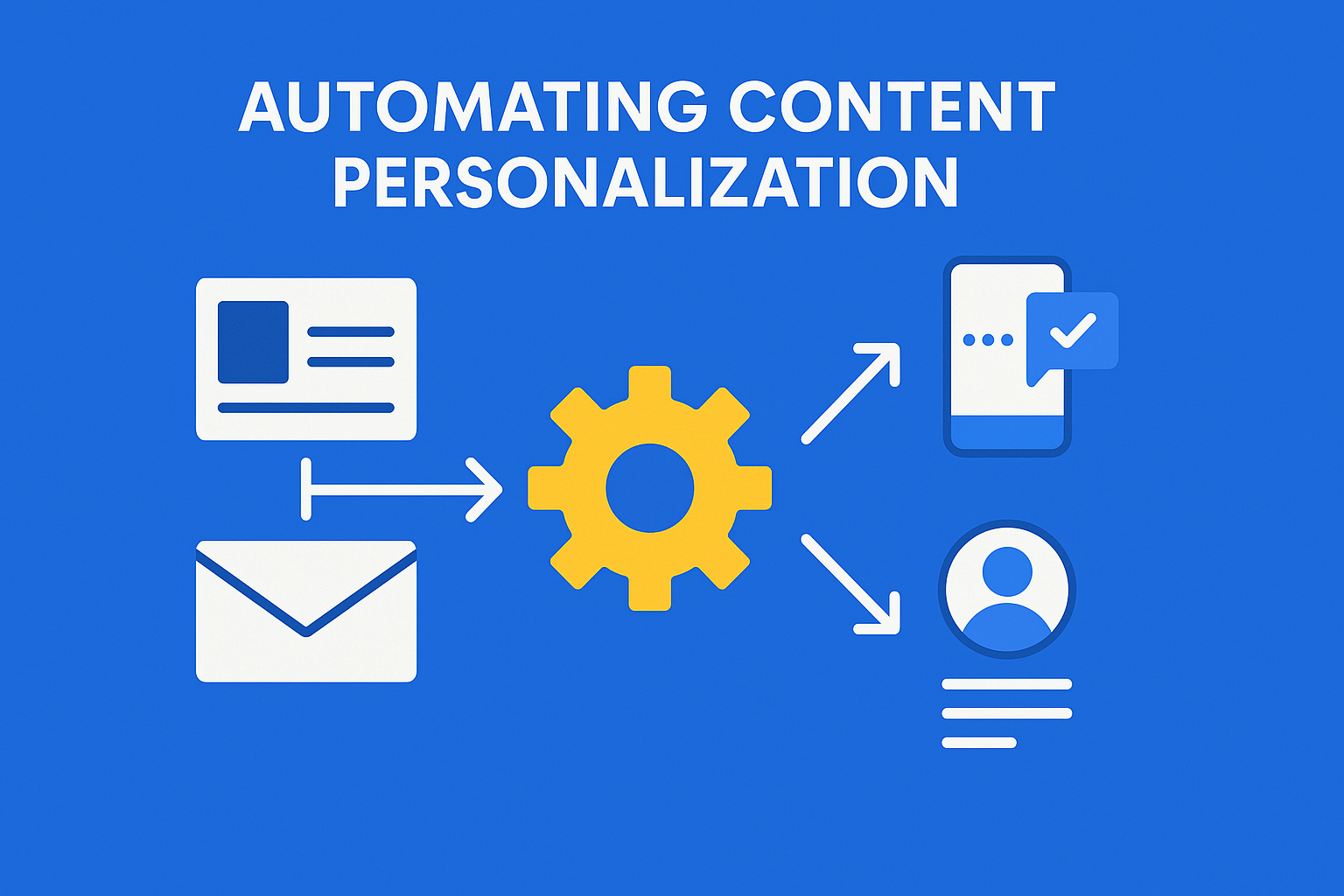
Content Personalizing Automation for Effectiveness
For organizations running several platforms, campaigns, and target segments specifically, personalizing content at scale can feel daunting. Not only is manually customizing material for every user time-consuming, but it is almost impossible. That is where automation finds application. Using AI-driven tools and methodologies can let companies provide very relevant material without overwhelming their staff.
1. AI-Driven Content Suggestions
Content personalizing has been revolutionized by artificial intelligence. AI may choose for consumers which messages, items, or articles to display instead of hand picking which ones.
- Examine user behavior and provide material most likely to be interacted with.
- Find trends to guide your choice of messaging, forms, or subjects for maximum performance.
- Change real-time material depending on user action automatically.
For instance, an artificial intelligence news website can suggest content depending on prior clicks of a reader, therefore guaranteeing that they always view pertinent rather than generic news.
Teams can easily develop, arrange, and maximize content suggestions using EasyContent, therefore ensuring that personalizing does not impede process flow.
2. Using user preferences to automatically distribute content
Automated content distribution guarantees that every user receives customized material depending on their interests rather than forwarding the identical blog post or email to every subscriber. This may include:
- Customized email series varying in response to user activity.
- Automated social media releases endorsing various materials for various audience groups.
- Dynamic website content tailored for location, device, or prior interaction.
For instance, an e-commerce business might provide tailored discounts depending on a consumer's purchasing behavior; for someone who often purchases skincare, they get special offers on cosmetic items.
3. Using EasyContent to Simplify Customized Content Creation & Approvals
Managing several versions of content while maintaining everything orderly and authorized on time presents one of the toughest obstacles with content personalizing. EasyContent assists in this regard:
- Automated approval systems guarantee that material passes the pipeline free from blockages.
- Role-based access allows teams to effectively control customized materials free from ambiguity.
- One spot for all material, comments, and edits is centralized collaboration.
For instance, EasyContent helps a marketing agency developing tailored email campaigns for several customers to keep all drafts, approvals, and changes simplified—without constant back-and-ahead emails.
Evaluating Your Personalization Strategy's Performance
Only when it produces actual results will personalized content be successful. Customizing content does not imply it will immediately increase engagement or convertions. Measuring performance is therefore very important; you must monitor important indicators, evaluate several techniques, and hone your plan to keep becoming better.
1. Important Tracking Metrics
Emphasize these fundamental measures to grasp the performance of your tailored content:
- Engagement Rates: Are consumers interacting more with tailored materials? Record likes, shares, and comments for social media posts as well as email click-through rates (CTR) on website components.
- Time Spent on Page: Visitors that remain longer on pages including tailored suggestions show they find the material relevant.
- Personalizing anything from a purchase to a webinar to a download of an eBook will raise conversion rates by rendering material more relevant.
- Bounce Rates: Should tailored content fail to appeal, guests will leave rapidly. High bounce rates might point to the need of changing personalizing strategies.
For instance, a travel website with location recommendations based on previous searches can monitor user expenditure of time investigating recommended trip guides.
2. A/B Testing Various Approaches of Personalization
Not every audience will benefit from every personalizing tactic. A/B testing allows you to evaluate several strategies and observe which really performs. The following describes:
- Try many headlines; can incorporating a customer's name in your email subject line increase open rates?
- Try customised suggestions; can displaying "Recently Viewed" products boost sales?
- Try location-based content; can geo-targeting of landing pages increase conversion rates?
For instance, an online fashion retailer may compare tailored product recommendations against generic best-sellers to find which increases sales.
3. Perfecting Your Plan Using Performance Data
Data without action is pointless. Once you have examined the effectiveness of tailored material, it is time to make changes:
- If participation is minimal, consider the degree of personalization—too much might feel invasive, while too little can appear meaningless.
- If conversions are slow, maximize calls to action (CTAs) and make sure personalizing fits user intent.
- EasyContent and other automation systems help to simplify content updates and guarantee teams may change their plans without losing track of scattered changes.
Teams can monitor approvals, handle several content versions, and guarantee that all customized materials are effortlessly updated and optimized using EasyContent.
What will make it work is making information more useful for everyone.
In the fast-paced digital world of today, making content that works for everyone isn't enough.
What people do, what they like, and what they want are all connected to what they want to know.
Brands will quickly fall behind if they don't change the tools they use.
🎯 It's not just a style that makes things stand out.
Do this to get more people to join your business, buy from you, and stay with it.
🛠️ It's okay if the plan you have to write doesn't change right away.
Some people can make things stand out without much trouble.
👉 If you need to do more in-depth work,
split your email list into groups or try out different names at first.
Then find out more and add to what you already know.
⚙️ Personalization needs to work well and be able to grow.
Teams can't make things more personal without making them more difficult.
Then it's very helpful to have the right tools.
📦 Users can choose what to do with the data that EasyContent gathers
and stores it all in one place.
Teams can easily change things to fit their needs.
🧩 The things that teams make, look over, and share
are based on their jobs and the ways that they work.
They don't have to keep an eye on everything by hand
or get stuck in feedback loops that never stop.
💬 Last Thoughts: Changing things is simple.
Designers need to know what their clients want and give it to them.
They can make a plan that works, is easy to do again and again,
and is likely to happen again if they use the right tech and base their plan on facts.
📣 Don't put off making something special because you think it will be hard.
Plan how you're going to do it instead.
✨ Don't be afraid to start small and get better as you go.
Tools like EasyContent can help you do this.
From now on, content marketing will be more about people.
That's how your business should look.


